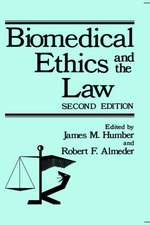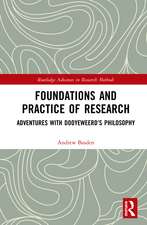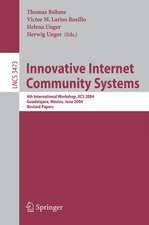Experimental Design: From User Studies to Psychophysics
Autor Douglas W. Cunningham, Christian Wallravenen Limba Engleză Paperback – 23 oct 2019
The book begins with an introduction to the concepts central to designing and understanding experiments, including developing a research question, setting conditions and controls, and balancing specificity with generality. The book then explores in detail a number of types of experimental tasks: free description, rating scales, forced-choice, specialized multiple choice, and real-world tasks as well as physiological studies. It discusses the advantages and disadvantages of each type and provides examples of that type of experiment from the authors’ own work. The book also covers stimulus-related issues, including popular stimulus resources. It concludes with a thorough examination of statistical techniques for analyzing results, including methods specific to individual tasks.
Preț: 486.63 lei
Preț vechi: 608.30 lei
-20% Nou
Puncte Express: 730
Preț estimativ în valută:
93.13€ • 101.12$ • 78.23£
93.13€ • 101.12$ • 78.23£
Carte tipărită la comandă
Livrare economică 22 aprilie-06 mai
Preluare comenzi: 021 569.72.76
Specificații
ISBN-13: 9780367382155
ISBN-10: 0367382156
Pagini: 407
Dimensiuni: 152 x 229 x 25 mm
Greutate: 0.75 kg
Ediția:1
Editura: CRC Press
Colecția A K Peters/CRC Press
ISBN-10: 0367382156
Pagini: 407
Dimensiuni: 152 x 229 x 25 mm
Greutate: 0.75 kg
Ediția:1
Editura: CRC Press
Colecția A K Peters/CRC Press
Public țintă
Academic and Professional Practice & DevelopmentCuprins
INTRODUCTION: What Is an Experiment? Designing an Experiment. RESPONSE MEASURES: The Task. Free Description. Rating Scales. Forced Choice. Specialized Multiple Choice. Real-World Tasks. Physiology. STIMULI: Choosing Stimuli. Presenting Stimuli: The Psychtoolbox. DATA ANALYSIS: Statistical Issues. Free Description, Questionnaires, and Rating Scales. Force and Multiple Choice. Bibliography.
Notă biografică
Cunningham, Douglas W.; Wallraven, Christian
Descriere
This book explains the basic terminology used to discuss experiments and takes a brief look at the more than 150 year history of experiments in psychology. It covers how to generalize from a few people to the whole population. The largest part of the book is dedicated to the most flexible, and arguably the most central, aspect of an experiment: What do the participants do? Each chapter follows the same structure and includes two examples, one from traditional psychophysics and one using computer animated facial expressions as stimuli.




























